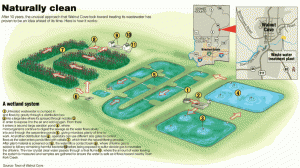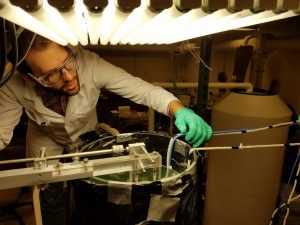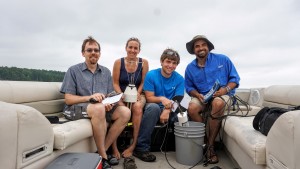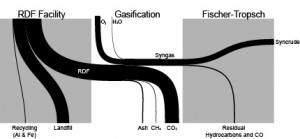We are environmental engineers and scientists interested in coupling fluid mechanics to biological, chemical, and/or physical processes in natural and engineered systems. Below are a list of a few of our ongoing and prior research projects. Please feel free to contact me (tnaziz@ncsu.edu) if you have any questions about our research.
Constructed Wetlands for Removal of Contaminants of Emerging Concern
 Contaminants of emerging concern (CEC) such as pharmaceuticals and personal care products are a major threat to our environment and a barrier in the movement towards the sustainable potable reuse of water. These compounds appear to impact ecosystems at relatively low concentrations and are a challenge for many conventional wastewater treatment facilities to remove. While there are existing advanced technologies that can remove many contaminants of emerging concern from wastewater, they are resource intensive and are often impractical for municipalities. Alternative, sustainable options are therefore needed. Fortunately, constructed wetlands have been recently recognized as having the capacity to degrade many of these emerging contaminants. This degradation occurs, in large part, due to the formation of highly reactive oxygenated species resulting from the interaction of sunlight and dissolved organic matter (DOM). Our research group is studying the formation of DOM and it’s reactivity in the field and in the lab to better understand how we can engineer these systems to passively remove challenging emerging contaminants from the environment.
Contaminants of emerging concern (CEC) such as pharmaceuticals and personal care products are a major threat to our environment and a barrier in the movement towards the sustainable potable reuse of water. These compounds appear to impact ecosystems at relatively low concentrations and are a challenge for many conventional wastewater treatment facilities to remove. While there are existing advanced technologies that can remove many contaminants of emerging concern from wastewater, they are resource intensive and are often impractical for municipalities. Alternative, sustainable options are therefore needed. Fortunately, constructed wetlands have been recently recognized as having the capacity to degrade many of these emerging contaminants. This degradation occurs, in large part, due to the formation of highly reactive oxygenated species resulting from the interaction of sunlight and dissolved organic matter (DOM). Our research group is studying the formation of DOM and it’s reactivity in the field and in the lab to better understand how we can engineer these systems to passively remove challenging emerging contaminants from the environment.
A Novel Water Column Reactor to Explore The Effect of Mixing on Phytoplankton Community Structure
 The formation of potentially toxic harmful algal blooms (HABs) in freshwater systems is an increasingly common occurrence in the developed world. One strategy to prevent the onset of HABs in water supply reservoirs has been to implement enhanced mixing systems, but there is no scientific consensus on the effectiveness of these geoengineering solutions. We have developed a novel laboratory-based water column reactor (WCR) to explore phytoplankton community structure in shallow reservoirs under a range of simulated natural and artificially mixed conditions. The WCR is one of the first known experimental system for investigating water-column algal community structure with consideration of light distribution, and mixing. Data from the WCR will provide valuable insights into HAB formation, toxicity production, and effective mixing strategies. This information can be used to inform broader water quality modeling and management to protect the beneficial uses of our reservoirs. The WCR will also be extendable to research on the photo-oxidation of organic compounds and the exploration of nutrient fluxes in shallow water systems.
The formation of potentially toxic harmful algal blooms (HABs) in freshwater systems is an increasingly common occurrence in the developed world. One strategy to prevent the onset of HABs in water supply reservoirs has been to implement enhanced mixing systems, but there is no scientific consensus on the effectiveness of these geoengineering solutions. We have developed a novel laboratory-based water column reactor (WCR) to explore phytoplankton community structure in shallow reservoirs under a range of simulated natural and artificially mixed conditions. The WCR is one of the first known experimental system for investigating water-column algal community structure with consideration of light distribution, and mixing. Data from the WCR will provide valuable insights into HAB formation, toxicity production, and effective mixing strategies. This information can be used to inform broader water quality modeling and management to protect the beneficial uses of our reservoirs. The WCR will also be extendable to research on the photo-oxidation of organic compounds and the exploration of nutrient fluxes in shallow water systems.
Effects of Mixing on Algal Blooms in Freshwater Reservoirs
 The use of enhanced mixing has been proposed as a means of suppressing the formation of harmful algal blooms (HABs) in freshwater and coastal waterbodies. While these systems have been used for five decades, there is still no consensus on the effectiveness of such systems and very little data relating to how enhanced mixing affects the biophysical processes controlling bloom formation. In this research we are conducting a field monitoring campaign in three NC Piedmont reservoirs. These three reservoirs, while climatically similar have different levels of artificial mixing. Water quality and algal bloom data collected from the field is being explored through the use of statistical and mechanistic modeling to ultimately develop predictive tools which can be used to better understand the usefulness of artificial mixing on phytoplankton community structure.
The use of enhanced mixing has been proposed as a means of suppressing the formation of harmful algal blooms (HABs) in freshwater and coastal waterbodies. While these systems have been used for five decades, there is still no consensus on the effectiveness of such systems and very little data relating to how enhanced mixing affects the biophysical processes controlling bloom formation. In this research we are conducting a field monitoring campaign in three NC Piedmont reservoirs. These three reservoirs, while climatically similar have different levels of artificial mixing. Water quality and algal bloom data collected from the field is being explored through the use of statistical and mechanistic modeling to ultimately develop predictive tools which can be used to better understand the usefulness of artificial mixing on phytoplankton community structure.
Mainstream Anaerobic Ammonia Oxidation (Anammox) for Tertiary Treatment
Improving Startup and Operation of Anaerobic Co-Digestion of Grease Interceptor Waste
Fat, oil, and grease (FOG) generated at food service establishments are removed by grease abatement devices to reduce the incidence of sanitary sewer overflows. In North Carolina, grease interceptor waste (GIW) pumped from the food service industry is treated as septage and either land applied or composted as a soil amendment. The anaerobic co-digestion of GIW provides a value added disposal option whereby GIW can be used to generate electricity at wastewater treatment facilities. Previous research at NC State, funded by the WRRI, has shown that addition of GIW results in increases in biogas production of up to 336%, the highest levels reported in the literature. These results directly impact the economic feasibility of operating GIW co-digesters, specifically with respect to maintaining high methane yields. However, the interactions between substrate variability (high FOG and food solids) and microbial community adaptations are not known, and directly impact start-up times and process resilience and resistance. This is an important issue in full scale operation, since the collected GIW can vary in strength and characteristics on a daily or per load basis. The overall objective of this project is to understand substrate-community interactions to optimize anaerobic co-digestion, particularly to minimize start-up time, and increase process resilience and resistance. This will lead to operation and start-up procedures that can be used in full-scale implementation of anaerobic co-digestion of GIW in utilities in NC and around the country.
Sustainable Anaerobic Co-Digestion of Grease Interceptor Waste
Fat, oil, and grease (FOG) generated at food service establishments pose a threat to public health and the environment by reducing the conveyance capacity of our collection systems and causing sanitary sewer overflows. Grease abatement device pumping is a necessary step to maintain system performance. Presently in North Carolina, FOG waste pumped from the food service industry is treated as septage and either land applied or composted as a soil amendment. The anaerobic co-digestion of grease interceptor waste (GIW) provides a value added disposal option whereby GIW can be used to generate electricity at wastewater treatment facilities. No facilities in North Carolina currently utilize the anaerobic co-digestion of GIW. Preliminary research at NC State has shown the addition of GIW to result in increases in biogas production of up to 317%. The proposed research aims to: (1) Explore the limits to anaerobic co-digestion by varying the composition of GIW, (2) Explore bioreactor process and microbial community that is functionally resilient to variations in FOG loading and (3) Evaluate the quality of co-digested biosolids during experimentation for tasks (1) and (2). Findings from this research will provide guidelines for the sustainable disposal of GIW via anaerobic co-digestion and move wastewater treatment facilities towards renewable energy generation.
Utilizing Municipal Solid Waste as a Biofuel Feedstock
 In this work we developed a process-based life-cycle assessment tool to explore the life-cycle emissions associated with the conversion of municipal solid waste to synthetic crude via a gasification and Fischer-Tropsch process. The work required the close coordination with faculty colleagues in Chemical Engineering and a detailed investigation into potential candidate-technologies for this complex conversion process.
In this work we developed a process-based life-cycle assessment tool to explore the life-cycle emissions associated with the conversion of municipal solid waste to synthetic crude via a gasification and Fischer-Tropsch process. The work required the close coordination with faculty colleagues in Chemical Engineering and a detailed investigation into potential candidate-technologies for this complex conversion process.